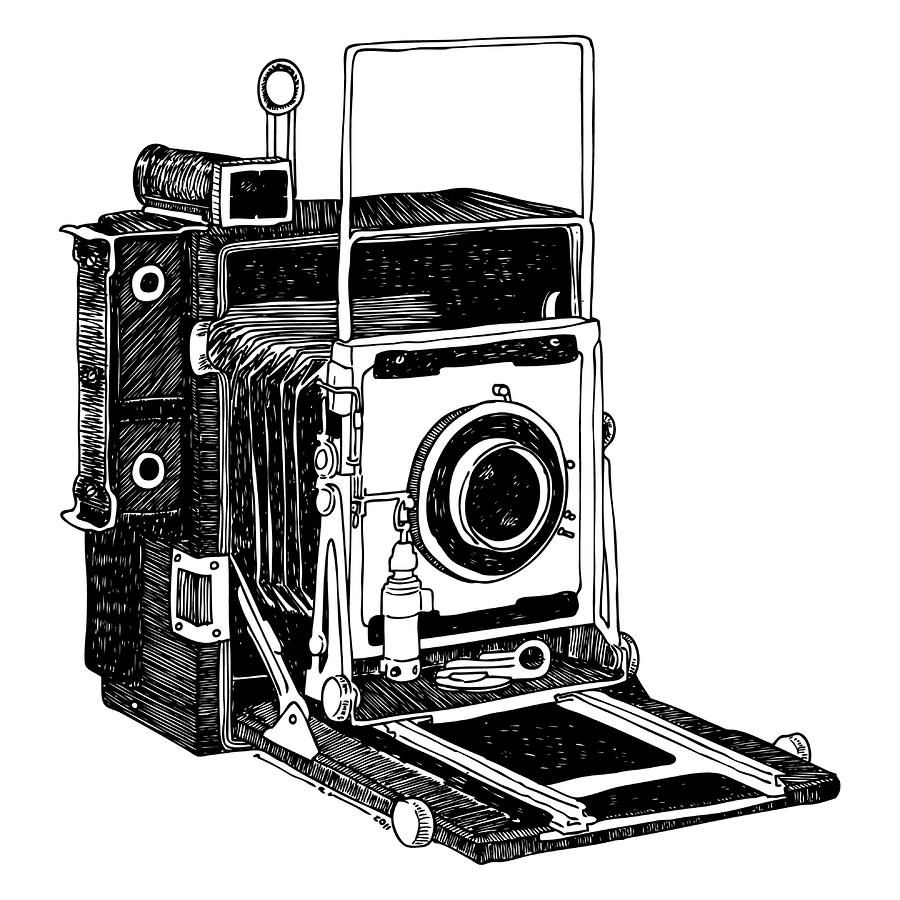
Communicating the Voices of the Unheard:
The Photography of Dorothea Lange
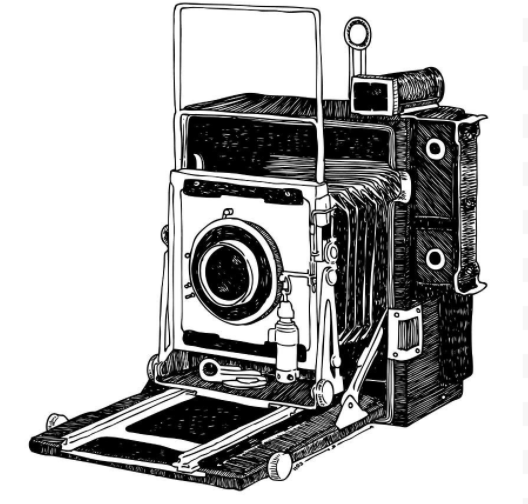


In 1934, mechanization and dust storms in the Great Plains forced thousands of small farmers toward California in search of a better life. However, California was not the promised land migrants had hoped for, as a surplus of migrants caused serious wage reductions, leaving workers in poverty.
"Modern migrants are not inspired by dreams of new land; they move on their way because they have lost what they had through the mechanization of agriculture or foreclosures on poor land, or because they have been 'blowed out' in the Dust Bowl."
— "Library Suggests Books on Modern Migrancy," 1940 (Evening Star, Chronicling America)
"Dorothea Lange: Grab a Hunk of Lightning" (PBS America, 2018)
"Migration is in all directions. Into Oklahoma, distressed people pour as through a funnel, going westward, southward, or passing back on their way to Arkansas and Missouri. California and Arizona licenses on old cars tell the many who have returned. Inquiries reveal others who go again and return again, milling back and forth, seeking opportunity over and over again in Arkansas, Texas, Arizona, New Mexico, even Florida, and above all on the Pacific Coast."
— Dorothea Lange and Paul Taylor, 1939, in An American Exodus: a Record of Human Erosion
“People just can’t make it back there, with drought, hailstorms, windstorms, dust storms, insects. People exist here and they can’t do that there. You can make it here if you sleep lots and eat little, but it’s pretty tough, there are so many people... people live out here in the brush like a den o’ dogs or pigs.”
— Tenant farmer and refugee from Texas who traveled to California, quoted in An American Exodus: a Record of Human Erosion by Dorothea Lange and Paul Taylor (1939)
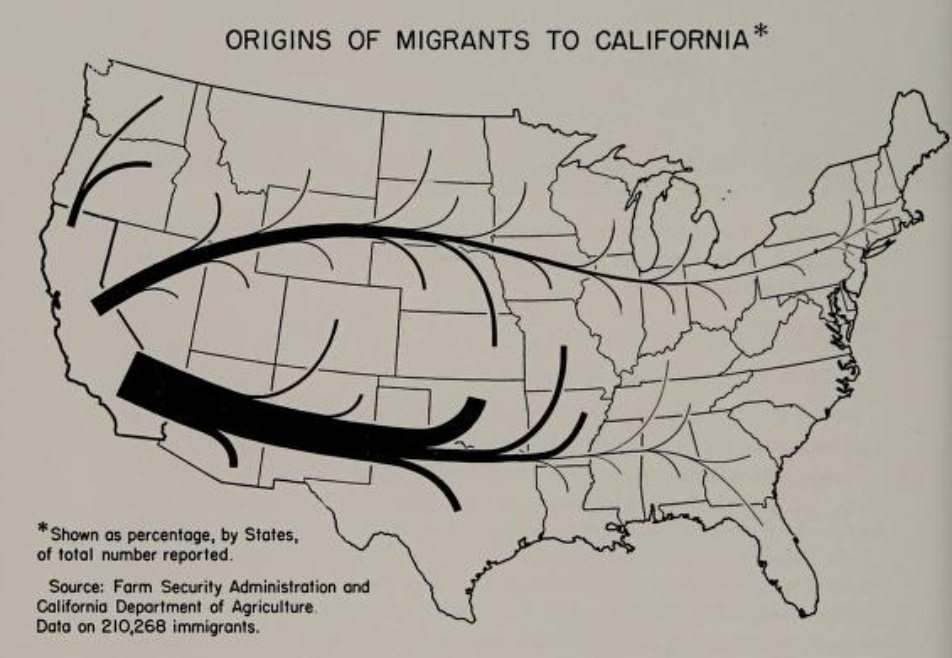
"Origins of Migrants to California," Farm Security Administration (included in An American Exodus by Dorothea Lange and Paul Taylor, 1939)
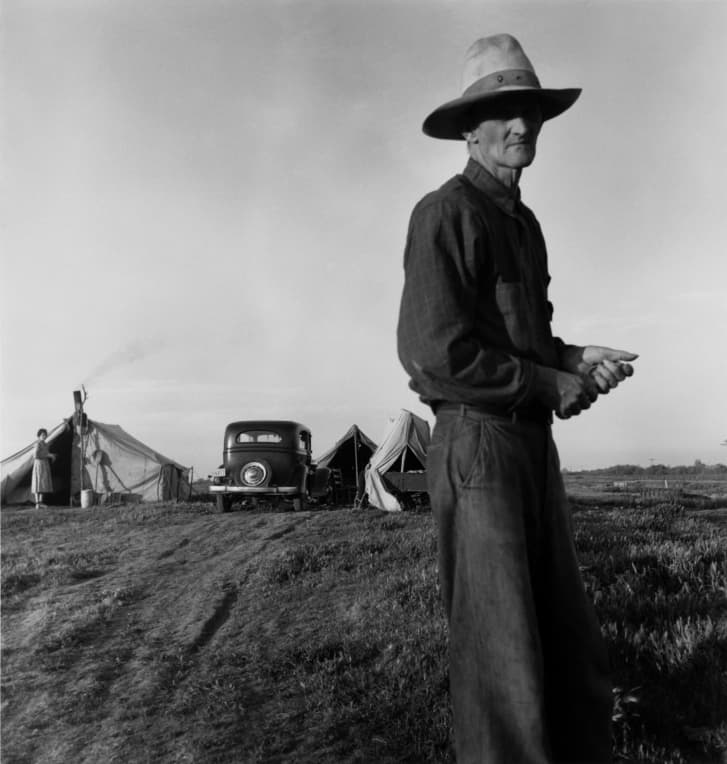
"Drought Refugees," Dorothea Lange, 1935 (The Dorothea Lange Collection, Oakland Museum of California)
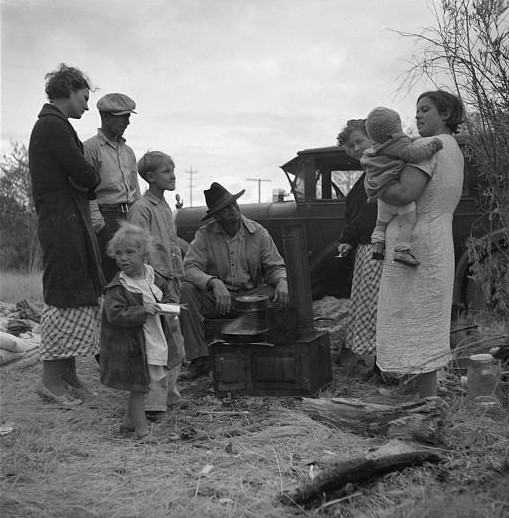
"Along the highway near Bakersfield, California. Dust bowl refugees," Dorothea Lange, 1935 (Library of Congress, Farm Security Administration Collection)

"Drought refugees from Oklahoma looking for work in the pea fields of California. Near San Jose Mission," Dorothea Lange, 1935 (Library of Congress, Farm Security Administration Collection)

"Pregnant migrant woman living in California squatter camp," Dorothea Lange, 1935 (Library of Congress, Farm Security Administration Collection)
President Franklin Roosevelt’s New Deal created national economic programs and public relief efforts to combat the recession. The Farm Security Administration (FSA) was a New Deal agency created to resettle farmers onto productive land and provide emergency funds. Lange was one of eleven photographers hired by the FSA in 1935 to document the growing migrant crisis in the American Dust Bowl, publicizing the plight of agricultural workers in America.
“This position... provided the opportunity to merge two seemingly disparate concerns: personal, artistic expression and social and political activism... Her resulting pictures constitute a major portion of the F.S.A.’s vast record of Depression-era America, an archive that has strongly shaped our collective memory of the period.”
— Keith Davis in The Photographs of Dorothea Lange, 1995
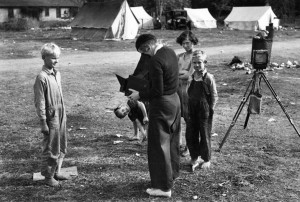
“Dorothea Lange photographing at a migrant camp." Rondale Partridge, 1937 (The Dorothea Lange Collection, Oakland Museum of California)
Lange photographed working people and families, knowing that pictures of individuals made a greater emotional impact than images of eroded lands. She emphasized the humanity, pride, and skill of these workers, demonstrating how they deserved better than their current conditions.
"Photographers of the Dust Bowl" (Ken Burns, 2012)
"She and the FSA were clearly dedicated to improving the lives of migrants and drought refugees by creating public sympathy through the use of powerful imagery. And of all the FSA photographers, I think Lange was the most successful at making images that were factual, but which also packed an emotional wallop.”
— Drew Johnson in “The government photographer who gave a face to American poverty,” 2018 (CNN)
Lange worked alongside Paul Taylor, an economist and farm labor expert from UC Berkeley whom she later married. Together, they captured quotes from subjects and took detailed field notes to accurately describe the visuals they produced.
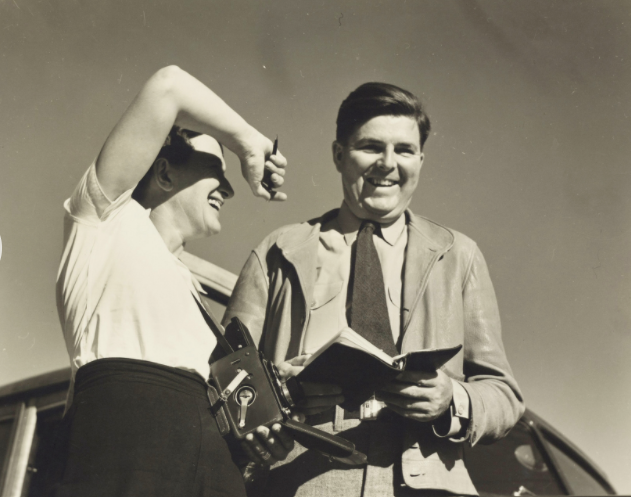
"Dorothea Lange and Paul S. Taylor in the Field," Rondal Partridge, circa 1935 (The Dorothea Lange Collection, the Oakland Museum of California)
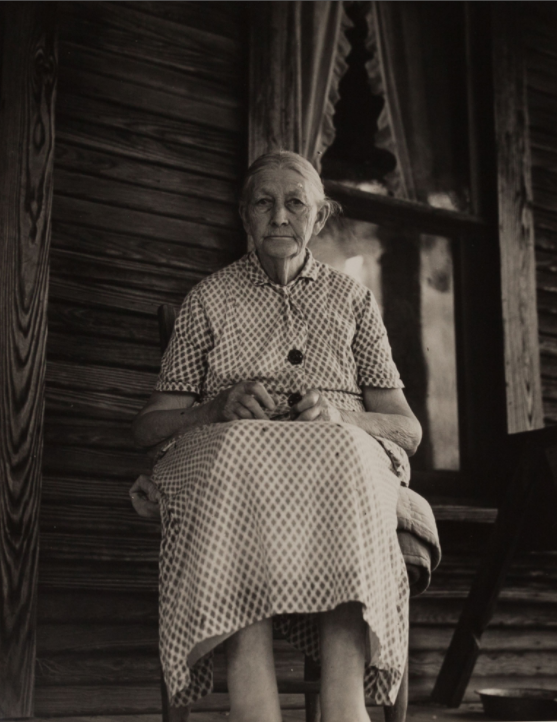
"Last West, Ma Burnham," Dorothea Lange, 1938 (The Dorothea Lange Collection, the Oakland Museum of California)
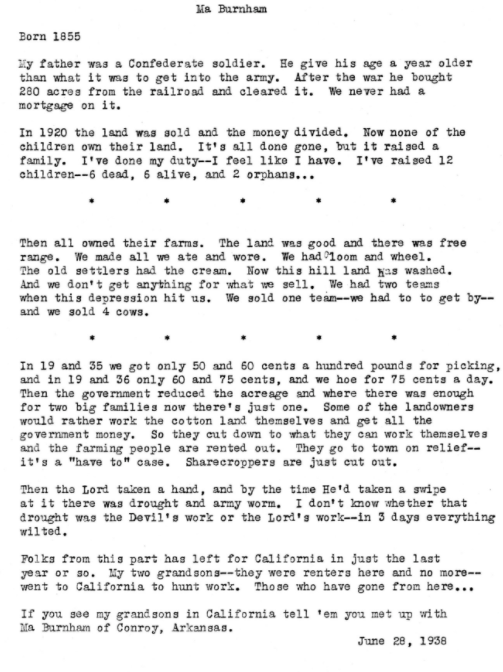
"Lange’s typewritten caption/notes for her photograph of 'Ma Burnham,'" Dorothea Lange, 1938 (The Dorothea Lange Collection, the Oakland Museum of California)
"Paul Taylor knew that the bare facts alone would not get politicians to act. Give them a mountain of statistics and they would yawn. They needed to feel what was wrong. So he hired Dorothea to make pictures of the terrible conditions the migrants lived in. 'My words in reports won't be enough,' he said. 'The people who make decisions need to see what these lives are like.'"
— Milton Meltzer, author of Dorothea Lange: Life Through the Camera (1985)